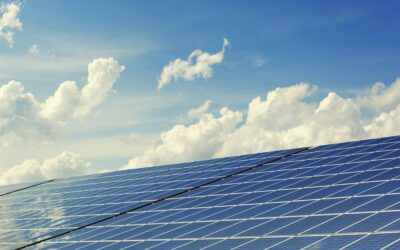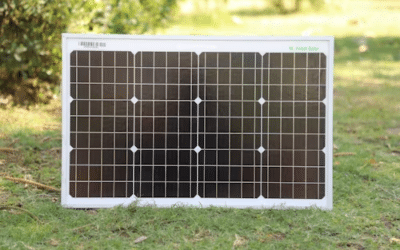Solar solutions have become increasingly popular in recent years as more people look for ways to reduce their carbon footprint and save money on their energy bills. As the world becomes more aware of the need for clean energy, solar energy has emerged as a leading renewable energy source. The solar industry has grown rapidly in response to this demand, and there are now a wide range of solar solutions available to consumers.
One of the main advantages of solar solutions is that they are a clean and renewable source of energy. Unlike traditional fossil fuels, solar energy does not produce harmful emissions that contribute to climate change. This makes it an ideal choice for those who are concerned about the environment and want to reduce their carbon footprint. In addition, solar solutions can also help homeowners save money on their energy bills over the long term. While the initial investment in solar panels and other equipment can be high, the savings in energy costs can add up over time and make solar solutions a cost-effective choice for many people.
As the demand for solar solutions continues to grow, the solar industry is expected to keep expanding and innovating. This means that there are likely to be even more options available to consumers in the future, including new technologies that make solar energy even more efficient and affordable. Whether you are looking to reduce your carbon footprint, save money on your energy bills, or both, solar solutions are a promising option that is worth considering.
Understanding Solar Technology
Solar technology is a rapidly evolving field that is becoming increasingly popular due to its cost-effective and environmentally friendly nature. This section will provide an overview of the key concepts and components of solar technology.
Photovoltaic Effect and Solar Cells
The photovoltaic effect is the process by which solar cells convert sunlight into electricity. Solar cells are made of semiconductor materials, such as silicon, that absorb photons from sunlight and release electrons. These electrons are then captured by an electric field within the cell, generating a flow of electricity.
There are two main types of solar cells: monocrystalline and polycrystalline. Monocrystalline cells are made from a single, high-purity silicon crystal and are more efficient than polycrystalline cells, which are made from multiple smaller crystals. However, monocrystalline cells are also more expensive.
Types of Solar Panels
Solar panels are made up of multiple solar cells connected together and are the main component of a solar power system. There are two main types of solar panels: monocrystalline and polycrystalline. Monocrystalline panels are more efficient and take up less space than polycrystalline panels. However, they are also more expensive.
Inverters: Converting DC to AC
Solar panels produce direct current (DC) electricity, which is not suitable for use in homes. Inverters are used to convert DC electricity into alternating current (AC) electricity, which is the type of electricity used in homes and businesses. There are two main types of inverters: string inverters and microinverters. String inverters are the most common and are used to connect a string of solar panels together. Microinverters are smaller and are installed on each individual solar panel. They are more expensive but can increase the efficiency of a solar power system.
Overall, understanding solar technology is key to making informed decisions about implementing solar solutions. By understanding the photovoltaic effect, types of solar panels, and inverters, individuals can make informed decisions about the best solar power system for their needs.
Solar Panel Installation and Operation
Site Visit and System Design
Before the solar installation process begins, a site visit is conducted to assess the roof space and determine the best layout for the solar array. This involves evaluating the orientation, tilt, shading, and available space for the system components. The design phase follows, where the specific requirements of the property are taken into account to create a customized solar solution.
Mounting and Installation Process
The mounting and installation process involves securing the solar panels to the roof or ground in a manner that maximizes energy production and ensures durability. This step includes the careful placement of racking systems and the interconnection of the solar panels to form the array. Quality workmanship during this phase is crucial to the long-term performance of the system.
Maintenance and Service
Once the solar panels are installed, regular maintenance and service are essential to ensure optimal performance. This includes periodic inspections, cleaning, and monitoring of the system to identify and address any issues promptly. Scheduled service appointments help to extend the lifespan of the solar installation and maximize its energy production.
Economics of Solar Power
Solar power has become an increasingly popular alternative to traditional energy sources. The economics of solar power are becoming more attractive as the cost of solar technology continues to decrease, making it a viable option for both residential and commercial use. This section will explore the costs and savings associated with solar power, financing and incentives available for solar projects, and the return on investment for those who choose to invest in solar.
Costs and Savings
The initial cost of installing solar panels can be high, but over time, the savings on electricity costs can make up for the investment. According to Investopedia, as of 2017, the cost for utility-scale photovoltaic (PV) solar power had dropped to $0.06 per kilowatt-hour (kWh). Cost targets for residential- and commercial-scale solar had dropped to $0.16 and $0.11 per kWh, respectively. The cost of solar technology is expected to continue to decrease, making it an even more attractive option for those looking to save money on their electricity bills.
Financing and Incentives
There are a variety of financing options available for those looking to invest in solar power. Solar loans, leases, and power purchase agreements are all options for financing solar projects. Additionally, there are a number of state and local incentives available for those who choose to invest in solar. The federal solar tax credit, also known as the solar investment tax credit, allows taxpayers to deduct 26% of the cost of installing solar panels from their federal taxes. This incentive is set to decrease to 22% in 2023, making now a good time to invest in solar.
Return on Investment
The payback period for a solar investment can vary depending on a number of factors, including the cost of electricity in the area, the size of the solar system, and the financing options chosen. However, in general, solar power is a long-term investment that can provide significant savings over time. According to McKinsey & Company, the economics of solar power are improving, and it is becoming a more cost-competitive power source. As the cost of solar technology continues to decrease and the incentives for investing in solar remain attractive, solar power is likely to become an even more popular alternative to traditional energy sources.
Advancements and Innovations in Solar
Solar energy is rapidly becoming a popular alternative to traditional energy sources. With ongoing advancements and innovations, the industry is poised to continue growing and improving in the years ahead.
Emerging Solar Technologies
In recent years, there has been a surge in the development of emerging solar technologies. These technologies are designed to improve the efficiency and performance of solar panels, making them more cost-effective and practical for widespread use. Some of the most promising emerging solar technologies include thin-film solar cells, concentrated solar power, and perovskite solar cells.
Thin-film solar cells are made from lightweight and flexible materials, making them ideal for use in a wide range of applications. Concentrated solar power uses mirrors or lenses to focus sunlight onto a small area, generating high temperatures that can be used to produce electricity. Perovskite solar cells are a type of solar cell that use a unique crystal structure to increase efficiency and reduce costs.
Performance and Efficiency Improvements
Improvements in solar panel efficiency and performance are key to the continued growth of the industry. The Solar Energy Technologies Office (SETO) is working to advance solar energy research and development, with a focus on improving efficiency and reducing costs.
One area of focus is the temperature coefficient, which measures how much a solar panel’s efficiency decreases as the temperature rises. By improving the temperature coefficient, solar panels can maintain their efficiency even in hot climates. Other areas of focus include increasing the efficiency of solar cells, reducing the cost of solar panel production, and improving the durability and lifespan of solar panels.
Battery Storage and Energy Independence
Battery storage is another area of focus for the solar industry, with the goal of achieving energy independence. By storing excess energy generated during the day, solar systems can provide power during periods of low sunlight or at night.
Advancements in battery storage technology have made it possible to store more energy in smaller, more efficient batteries. This has led to the development of grid-tied solar systems, which allow homeowners and businesses to generate their own energy and sell excess energy back to the grid.
In conclusion, the solar industry is constantly evolving and improving, with ongoing advancements and innovations in emerging solar technologies, performance and efficiency improvements, and battery storage. With continued research and development, the industry is poised to play an increasingly important role in meeting the world’s energy needs.
Choosing the Right Solar Solution
When choosing a solar solution, it’s important to consider a few key factors to ensure that you’re getting the best value for your investment. Here are some things to keep in mind when evaluating solar providers, warranties, and equipment.
Assessing Solar Providers
First and foremost, it’s important to choose a reputable solar company that has a track record of success. Look for companies that have been in business for several years and have a strong reputation in the industry. Consider reading reviews from previous customers to get a sense of their experience with the company.
Some of the best solar companies in the market include SunPower, Tesla, Palmetto, Sunrun, and Blue Raven. These companies offer a range of solar solutions, including solar panels, energy storage, and installation services.
Warranties and Certifications
When evaluating solar equipment, it’s important to consider the warranty and certifications that come with it. Most solar panel brands offer a product warranty that covers defects and malfunctions for a certain period of time. Manufacturer warranties can range from 10 to 25 years, so be sure to check the warranty length before making a purchase.
Certifications are also important to consider when choosing a solar solution. Look for panels that have been certified by organizations like the International Electrotechnical Commission (IEC) or the Underwriters Laboratories (UL). These certifications ensure that the panels meet industry standards for safety and performance.
Evaluating Solar Equipment
When evaluating solar equipment, it’s important to consider factors like efficiency, durability, and cost. Some of the top solar panel brands in the market include SunPower, LG, and Panasonic. These brands offer panels with high efficiency ratings and long lifespans.
In addition to panels, it’s also important to consider other solar equipment like inverters and batteries. Inverters convert the direct current (DC) energy generated by the panels into alternating current (AC) energy that can be used in your home. Batteries store excess energy generated by the panels for use during times when the sun isn’t shining.
Overall, choosing the right solar solution requires careful consideration of a range of factors. By assessing solar providers, warranties, and equipment, you can make an informed decision about which solution is right for you.




